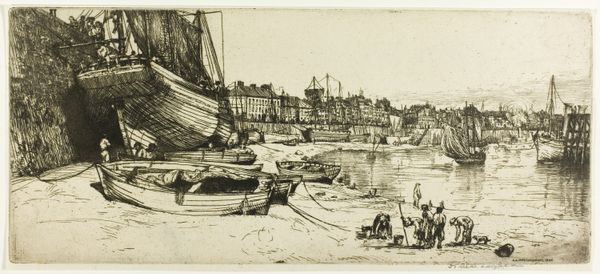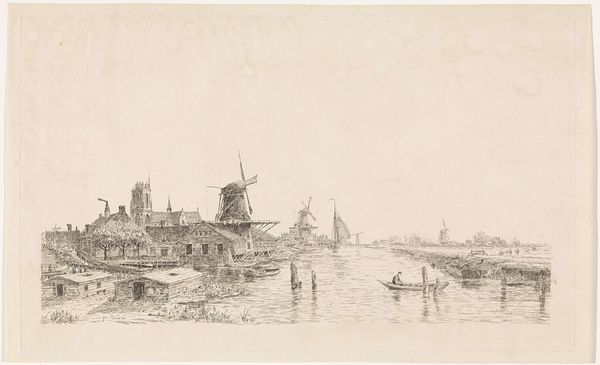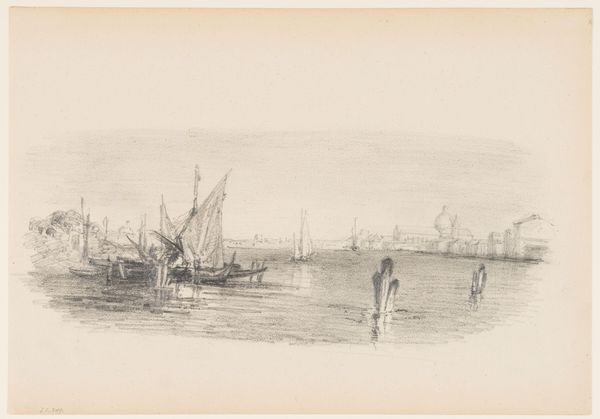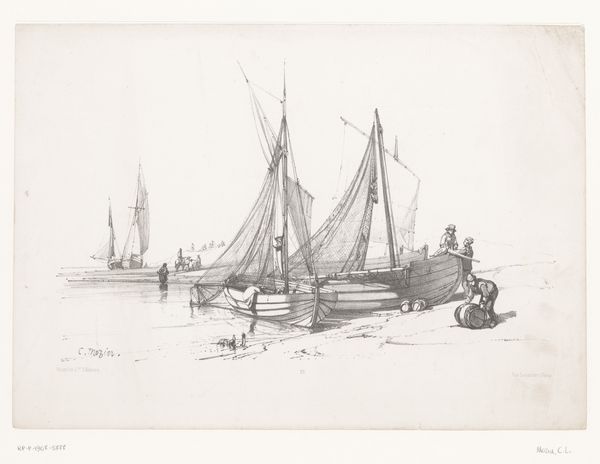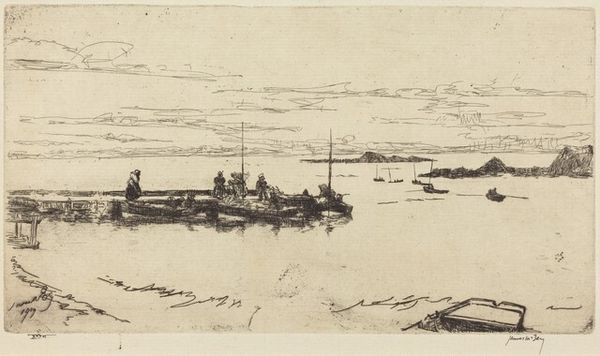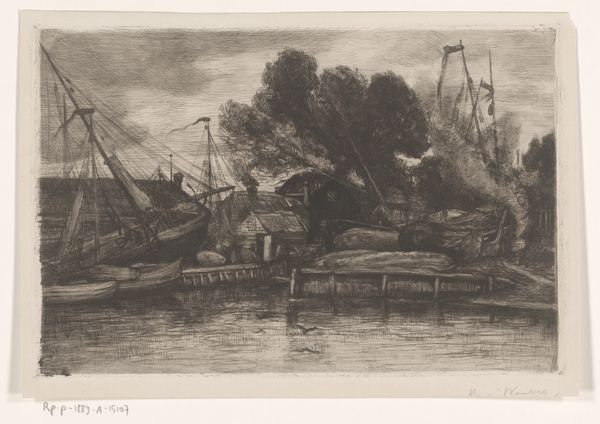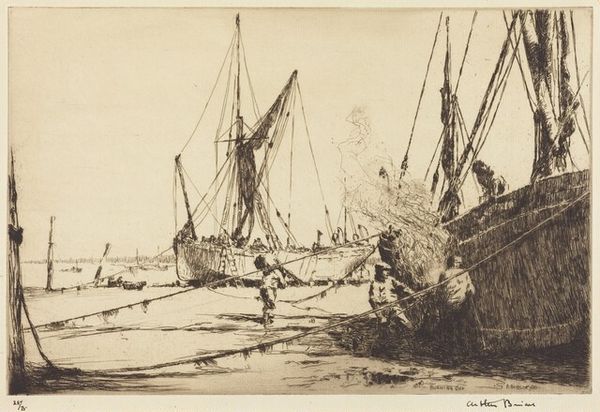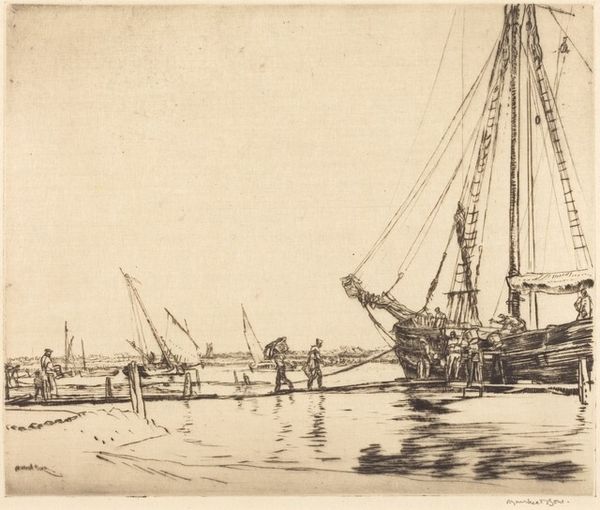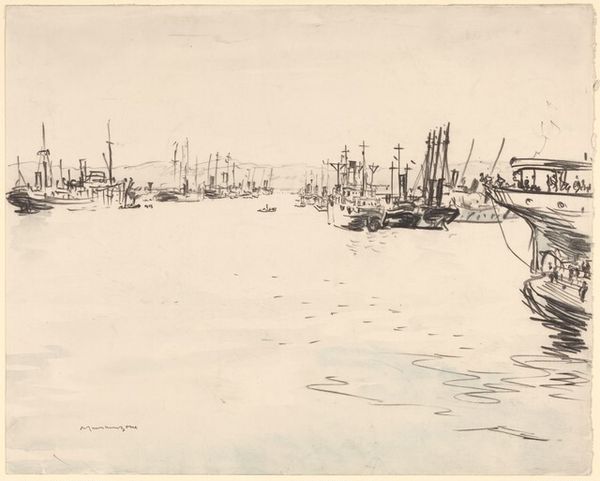
print, etching
# print
#
etching
#
landscape
#
etching
#
cityscape
#
realism
Dimensions: plate: 21.59 × 38.26 cm (8 1/2 × 15 1/16 in.) sheet: 31.91 × 48.26 cm (12 9/16 × 19 in.)
Copyright: National Gallery of Art: CC0 1.0
Curator: "Spanish Coast," a print by W. Douglas MacLeod, likely dates to the 1920s. What’s your initial reaction to this piece? Editor: It’s… sepia-toned and serene, yet filled with labor. A huge stillness blankets the harbor and these workers attending to their tasks. The mark-making itself feels… scratchy and energetic, even at rest. Curator: Yes, that etching technique really lends itself to both detail and atmosphere, doesn't it? I'm drawn to the almost dreamlike quality. It evokes memories of places I haven't been. Those hulking boats on the beach seem timeless. Editor: I'm intrigued by those boats, actually. Consider the immense work of hauling those up— and the animals assisting. An abundance of materials involved here: the wood of the ships, the ink itself. It speaks of resources mobilized and human energy. Curator: Exactly! And consider the symbolism. The boat can be a symbol of safe passage but here stranded on land; it raises thoughts of transition and stalled opportunities, maybe? A dream deferred? Editor: Perhaps. Or simply boats that are waiting repair, out of necessity. And how available was printmaking in Spain at this time? How many editions were made? Who was purchasing them? What kind of workshop printed this, and were they producing any other kinds of art? Curator: Interesting questions. These prints were more easily disseminated than oil paintings, so might this reach a wider audience, exposing people to this quiet beauty of the coast? Did such artwork affect migration? I like the possibilities it holds. Editor: Ultimately, the process behind making it also speaks volumes about distribution and engagement, I guess. So what cultural memory does *this* evoke now, in the age of mechanical reproduction, the mass printed artwork? What do we make of that relationship, looking at it almost 100 years on? Curator: Good food for thought. Editor: Agreed. It's got a melancholy, honest atmosphere... definitely.
Comments
No comments
Be the first to comment and join the conversation on the ultimate creative platform.
